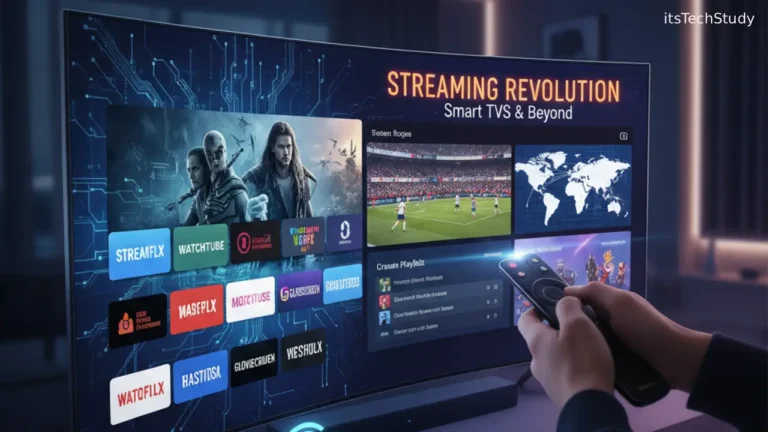Introduction: Why Professionals Need More Than Just a Laptop
In 2025, the laptop is no longer just a tool-it’s a creative partner. From developers coding complex applications to designers working on 3D visuals, and content creators editing 4K videos, the demand for power-packed machines has never been higher.
A few years ago, most professionals relied on desktops for performance-heavy tasks. But with advancements in portable GPUs, AI-powered optimization, and ultra-fast SSDs, laptops have evolved into creative workstations. The challenge today isn’t finding a laptop-it’s finding the right one that balances performance, portability, and productivity without breaking the bank.
This guide dives deep into the top-performing laptops for designers, developers, and creators in 2025, comparing their real-world performance, pros and cons, and value for money—so you can invest in a device that truly supports your workflow.
What Does a Laptop Need to be “Top Performing” in 2025?
Before we explore the best models, let’s understand what defines a “top-performing” laptop today. The needs of a developer, designer, and creator overlap but aren’t identical.
Key Features Professionals Should Look For
- Processor (CPU): Look for Intel Core i7/i9, AMD Ryzen 7/9, or Apple M3 chips for maximum multitasking power.
- Graphics (GPU): NVIDIA RTX or Apple’s M-series integrated GPUs handle 3D rendering and video editing seamlessly.
- RAM: 16GB is the sweet spot for professionals, but 32GB or more ensures future-proofing.
- Storage: NVMe SSDs with 512GB–1TB are essential for fast load times and smooth data handling.
- Display: A color-accurate display with 100% sRGB or higher is crucial for design and content creation.
- Battery Life: Long-lasting performance for on-the-go productivity.
- Build Quality: Lightweight yet durable aluminum bodies are ideal for mobile professionals.
Comparison Table – Best Laptops for Professionals in 2025
| Laptop Model | Best For | Processor | GPU | RAM | Storage | Display | Battery Life | Price Range (INR) |
|---|---|---|---|---|---|---|---|---|
| Apple MacBook Pro M3 (16-inch) | Designers, Creators | Apple M3 Pro | Integrated | 16–32 GB | 512 GB–1 TB | Liquid Retina XDR | 18 hrs | ₹2,49,900+ |
| Dell XPS 15 (2025) | Developers, Designers | Intel Core i9 (14th Gen) | NVIDIA RTX 4060 | 32 GB | 1 TB SSD | OLED 4K | 12 hrs | ₹2,20,000+ |
| ASUS ROG Zephyrus G16 | Creators, Gamers | AMD Ryzen 9 | RTX 4070 | 32 GB | 1 TB SSD | QHD 165Hz | 10 hrs | ₹1,95,000+ |
| HP Spectre x360 16 | Hybrid Creators | Intel Core i7 | Intel Arc | 16 GB | 1 TB SSD | OLED 3K | 13 hrs | ₹1,85,000+ |
| Lenovo ThinkPad X1 Carbon Gen 12 | Developers, Business Pros | Intel Core i7 | Integrated | 16 GB | 1 TB SSD | 2.8K IPS | 15 hrs | ₹1,75,000+ |
Top 5 Laptops Breakdown
1. Apple MacBook Pro M3 (16-inch)
The MacBook Pro continues to dominate the creative world, offering raw performance and best-in-class battery life.
Pros:
- Exceptional performance for design, video editing, and rendering.
- Vibrant Liquid Retina XDR display.
- Outstanding thermal efficiency.
Cons:
- Premium pricing.
- Limited upgrade options post-purchase.
Best For: Professional designers and video editors who need a seamless creative experience with macOS.
2. Dell XPS 15 (2025)
Dell’s flagship XPS 15 strikes a perfect balance between portability and power, making it ideal for developers and creative professionals.
Pros:
- Stunning OLED 4K display.
- Excellent keyboard and build quality.
- Reliable performance with NVIDIA RTX graphics.
Cons:
- Battery life could be better under heavy workloads.
- Slightly heavier than competitors.
Best For: Developers working with high-end software like Android Studio or Unreal Engine.
3. ASUS ROG Zephyrus G16
While it’s marketed as a gaming laptop, its high-end specs make it a favorite among creators.
Pros:
- Excellent GPU performance for 3D modeling and rendering.
- Superior cooling system.
- Premium design with QHD display.
Cons:
- Slight fan noise under load.
- Average battery life.
Best For: 3D artists, animators, and content creators who need raw GPU power.
4. HP Spectre x360 16
A 2-in-1 powerhouse designed for flexibility and style, perfect for hybrid professionals.
Pros:
- 360° hinge with touch and pen support.
- Gorgeous OLED display.
- Long battery life.
Cons:
- Slightly expensive for the specs.
- Not ideal for heavy 3D workloads.
Best For: Designers who prefer flexibility between drawing, presenting, and working on the go.
5. Lenovo ThinkPad X1 Carbon Gen 12
The ThinkPad series remains a gold standard for developers and business professionals needing reliability.
Pros:
- Legendary keyboard and durability.
- Strong security and business features.
- Excellent battery life.
Cons:
- Integrated graphics only.
- Slightly conservative design.
Best For: Software developers and professionals who prioritize productivity and endurance.
Choosing the Right Laptop – Based on Your Profession
For Designers
- Prioritize display quality, color accuracy, and GPU performance.
- Ideal choices: MacBook Pro M3 or HP Spectre x360.
For Developers
- Focus on CPU performance, RAM, and keyboard comfort.
- Ideal choices: Dell XPS 15 or Lenovo ThinkPad X1 Carbon.
For Content Creators
- Look for GPU power, storage, and thermal efficiency for rendering tasks.
- Ideal choices: ASUS ROG Zephyrus G16 or MacBook Pro M3.
Pros and Cons of Investing in a High-Performance Laptop
Pros:
- Future-proof for at least 4–5 years.
- Handles multitasking and heavy workloads effortlessly.
- Portable yet powerful enough for creative and development work.
- Higher productivity and reliability.
Cons:
- Premium cost compared to standard laptops.
- Repairs and upgrades can be expensive.
- Often heavier than ultrabooks.
Quick Buying Tips for Professionals
- Set Your Budget: Expect to spend between ₹1.5L to ₹2.5L for high-end models.
- Choose Your OS Wisely: macOS for creative professionals, Windows for developers, Linux compatibility if coding-heavy.
- Prioritize Display: A color-accurate display is non-negotiable for design work.
- RAM Over Storage: Choose more RAM now; you can always add external storage later.
- Check Cooling Efficiency: Especially important for creators using rendering tools.
- Battery and Portability: If you travel often, aim for a 14–15 inch model with long battery life.
Conclusion: Power, Portability, and Performance in One Package
The laptop landscape in 2025 is more exciting than ever. Professionals no longer have to compromise between creativity and convenience. Whether you’re a designer needing color accuracy, a developer demanding speed, or a content creator craving GPU muscle, there’s a perfect laptop tailored to your needs.
The key is to align your investment with your workflow—not just trends. A well-chosen laptop will empower you to create, code, and innovate without limits, making every click, render, and compile smoother than ever.
Most Asked Questions (FAQ)
Q1: Which laptop is ideal for both design and programming?
Ans: The Dell XPS 15 (2025) is a great all-rounder, providing robust specs ideal for both creative and coding work.
Q2: Are gaming laptops suitable for content creation?
Ans: Indeed, gaming laptops such as the ASUS ROG Zephyrus G16 offer premium GPUs that are perfectly suited for video editing and rendering.
Q3: How much RAM do professionals actually need?
Ans: For general design and development, 16GB is enough. But 32GB provides smoother multitasking and future-proofing.
Q4: Is the MacBook Pro worth the money?
Ans: Yes, for experts who are committed to creative software such as Final Cut Pro, Logic Pro, or Adobe Creative Cloud, the MacBook Pro M3 provides outstanding performance and battery life.
Q5: Do I use Intel or Apple Silicon?
Ans: If you work with macOS and Apple-only software, use M3 chips. For cross-platform capability, Intel or AMD laptops offer more flexibility.
Q6: Which one is the lightest without sacrificing performance?
Ans: The Lenovo ThinkPad X1 Carbon offers excellent portability while maintaining robust performance for developers and business users.












No Comments Yet
Be the first to share your thoughts.
Leave a Comment